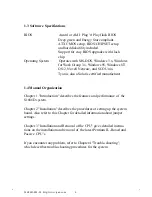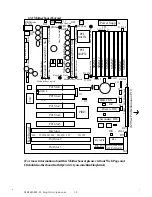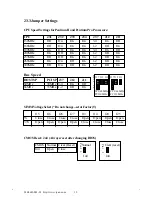
7
S1686D-001-01
Pins 1&2: Open
Pins 3&4: Close
(Shorted)
Pin 1 2 3 4
Refer to Addendum A (AMI BIOS Setup) and Addendum B (Award BIOS Setup)
for the BIOS Setup requirements and the CMOS Configuration Information,
including instructions to change the password, to format a hard disk, and to
troubleshoot CMOS errors. Both AMI and Award BIOS documents are also
available in the ADOBE Acrobat format. Please refer to the Web Page located at
ftp://ftp.tyan.com/manual/s1686da.pdf for AMI and ftp://ftp.tyan.com/manual/
s1686db.pdf for Award BIOS information.
1.5 Manual Conventions
In this manual, the following terms are used in reference to setting up jumpers:
1. When the term "close" is used, the pin (pins) specified for the jumper should
be connected (closed), and the circuit of the connecting pins will be shorted.
2. When the term "open" is used, the pin (pins) specified for the jumper should
not be connected, and the circuit of the connecting pins will not be shorted.
1.6 CPU Prototypes
Currently, Intel produces two types of Pentium II processors: the Active (Boxed)
Processor, and the Passive Processor. (Refer to the pictures shown on Page 8).
These two types of processors are essentially the same in design. The only
difference between these two types of processors lies in their cooling methods.
The Active Processor is equipped with a cooling fan, and the Passive Processor
is equipped with a heat sink. These two types of CPUs provide the user with the
same function, and should be installed in the "Pentium II" (SEC) slots on the
motherboard. (Refer to Chapter 3 for the installation and removal of Pentium II
Processors).
Although the S1686D motherboard is designed for a dual system, it can also
accommodate a single CPU. However, when a single CPU configuration is
chosen, the Pentium II CPU should be installed in the Pentium II Primary slot as
mentioned in Chapter 3.








































